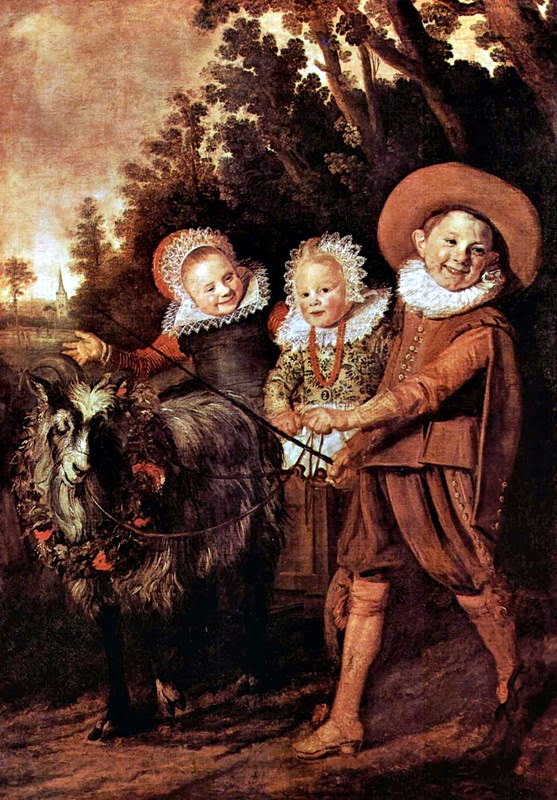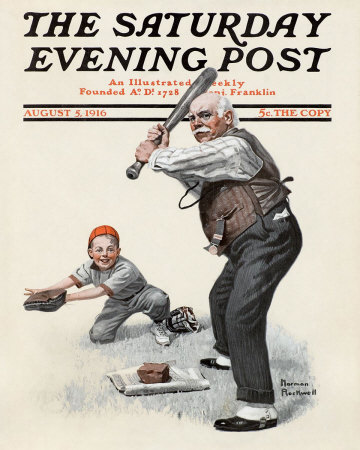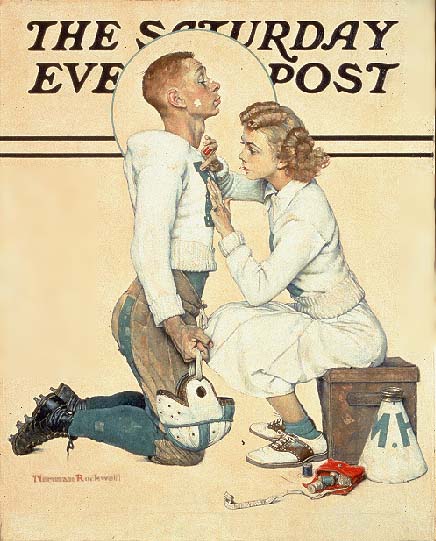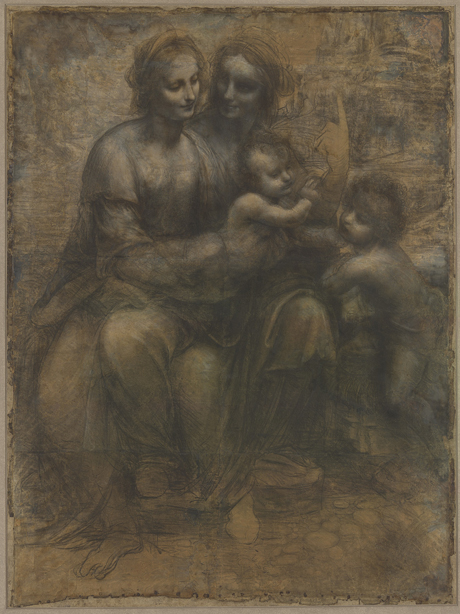Is disavowal repressing something unbearable, or at least sublimating it something more palatable and socially acceptable? What often arises is the concept of innocence, a byproduct of this process of disavowal and reluctance to own up and acknowledge what one already is conscious of or thinks they are which is pertinent to the American notion of an innocent nation, a new world unencumbered by the past and part of the package of exceptionalism which profoundly influences questions of national identity. Norman Rockwell is the epitomy of this unconscious decision to idealize the world or create an idealized world where a kind of sentimental, kitschy banality that denies the intensity of human emotion channeling real tragedy into pleasant sadness and humorous problems, a kicking of the proverbial can down the country mile to escape the pain of real life. This Americanized break with the past found its avant-garde equivalent in Dadaism and Duchamp; both creating worlds of the ready-made, conceptual archetypes engaged in a disavowal of the past….

--- but at some unknown time, the canvas was cut -- three children on the right were separated from the family, and turned into a different work. Called Three Children and a Goat Cart, it is now in the collection of the Musées royaux des Beaux-Arts de Belgique in Brussels, donated in 1928.--- Read More:http://www.artsjournal.com/realcleararts/2011/10/toledo-hals-part-two.html
Halperin: I put the word “adults” in scare quotes because one so rarely meets a real adult nowadays. Most people one encounters are rather overgrown children, fully ensconced in a manufactured innocence that real children would have no difficulty seeing through. “Adults” love Norman Rockwell because he allows them to bathe themselves in innocence, and because his work seems to lack all the ambiguities, complexities, and problems that might otherwise induce such stressful conditions as thinking or self-examination or informing oneself about the world. There is no overt sex in Norman Rockwell’s paintings, no violence, no real or insoluble unhappiness, no poverty or serious illness or crime, and, until late in his career, no black people except for the occasional porter. (Rockwell, it should be said, had long wanted to depict African Americans but was forbidden to do so by his editors at the Saturday Evening Post, who feared that the mere sight of them might upset most of their readers, and who were, moreover, probably right.)…

---Heinz Kohut describes "two kinds of splitting in the organization of self-experience: horizontal splitting (repression) and vertical splitting (disavowal) (Kohut, 1971). In repression something which would create unbearable conflict if conscious, is pushed into the unconscious. This creates a horizontal split in consciousness (imagine the levels of consciousness from top to bottom: conscious, preconscious, and unconscious). Conversely, dissociation is a vertical split of consciousness. As a result, one particular ego state, or altar-ego, can exist "in depth" with a conscious, preconscious, and unconscious component, separate from the other ego states or from the central ego . Victims of trauma distance themselves "from the terror and pain of abuse by an extreme form of disavowal, rendering that which is unbearable into "not me" experience via vertical splitting" (AGPA, 1993).--- Read More:http://thesecretoftheuniversechoice.blogspot.com/2011/08/dissociation-silent-plea-for-help.html image:http://www.best-norman-rockwell-art.com/norman-rockwell-saturday-evening-post-cover-1916-08-05-gramps-at-the-plate.html
…Of course, people who like Rockwell—and I count myself passionately among them—will respond that they perfectly well know these things already. Obviously Rockwell’s world isn’t the “real world,” or at least not the whole of that world. That’s the point. His illustrations offer a pleasant respite from the pressures and tensions of life. And what’s so wrong with that? Nothing, really—unless one’s whole life is an elaborate and extended respite from those things. For that is what innocence is—an ingrained habit of denying what one knows but doesn’t want to know….
…He takes at least some responsibility even for what he does not know, because he understands that our decisions not to know are at least partly volitional. Innocence is a choice not to know something, and therefore a lie, since the very choice must be based on some presentiment, some suspicion, some tiny bit of knowledge (or even a good deal more than a tiny bit) we already possess. Innocence is a pretense of ignorance, a pretense staged not so much for others as for ourselves. This is what Nietzsche rails against in my epigraph—people who can’t tell good “honest” lies because they don’t have the courage to face what is true and false in themselves. They cannot choose to lie because they lie incessantly and unconsciously to themselves. In the 1950s, Jean-Paul Sartre would elaborate Nietzsche’s insight into the concept of mauvaise foi or bad faith….

---But what happens when the theory of repression becomes an orthodoxy, when the injunction 'thou shalt not repress' moves into the place of the old injunction 'thou shalt not speak'? This is precisely the predicament analysed by Michel Foucault who argues compellingly, in the first volume of his History of Sexuality against what he calls the 'repressive hypothesis'. The one thing we take care to know for absolute and infallible sure about the Victorian age, is that they were grimly repressed, that they writhingly concealed from themselves the knowledge of sexual desire. We might wonder what work of reinforcement there might be in our being so sure, or wanting to be, about the Victorians' repressiveness and repressedness (as Jacques Derrida has remarked, being sure and wanting to be sure are the same thing). The repressive hypothesis certainly allows us to act as the authorised interpreters of what the Victorians did not know about themselves. It also surreptitiously promotes the sexuality which we are so cockily convinced that the Victorians dreaded into an essential principle of life and identity. Any denial of the deeply-laid contemporary assumption that your sexuality is not something you do, but something you essentially are, an assumption that is stronger than ever in our era of mainstream and even state-sponsored soft-porn, is automatically assumed to be the evidence of repression: how, then, do you plausibly deny that you are 'in denial'? --- Read More:http://www.stevenconnor.com/repress/ image:http://www.tfaoi.com/aa/2aa/2aa179.htm
…For Freud, disavowal is one among several ways of suppressing something unbearable. Repression, another of those ways, banishes unwanted knowledge or desires to the unconscious, where they are no longer available to us. Disavowal, by contrast, involves a “splitting” of the self, so that we simultaneously know and don’t know something….

Read More:http://www.art.com/products/p9388041235-sa-i5446843/norman-rockwell-child-psychology-or-spanking-saturday-evening-post-cover-november-25-1933.htm
…While Freud would not approve, I want to propose an ethical distinction between repression and disavowal. In repression, the conscious mind finds something so objectionable (though also desirable) that it simply expels it and will have no more to do with it. Repression therefore involves, for better or worse, a genuine renunciation….Read More:http://www.press.uchicago.edu/Misc/Chicago/314405.htmla

---"Leonardo's childhood"-writes Freud-"was remarkable in precisely the same way as this picture. He had had two mothers: first his true mother, Caterina, from whom he was torn away when he was between three and five, and then a young and tender step-mother, his father's wife." According to Freud, as we know, the older woman in da Vinci's picture (Saint Ann) in fact corresponds to the mother whom Leonardo was taken from and, still according to Freud, "the artist seems to have used the blissful smile of Saint Ann to disavow and to cloak the envy which the unfortunate woman (Caterina) felt when she was forced to give up her son to her better-born rival, as she had once given up his father as well." "The mother's smile never existed," writes Sarah Kofman. In other words, the "blissful smile of Saint Ann is the result of
ie: it is the artist's disavowal of the suffering of his mother, and it masks the jealousy which she felt when she was forced to hand over her son to her rival." Read More:http://www.passionsincontext.de/index.php?id=776 image:http://blogs.telegraph.co.uk/news/willheaven/100116389/for-proof-of-leonardo-da-vincis-genius-this-is-where-you-need-to-look/








 COMMENTS
COMMENTS



